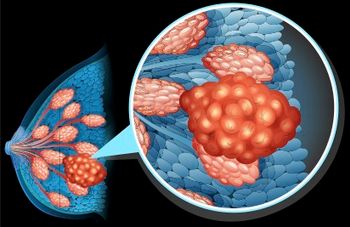
Subcutaneous Treatment of Early-Stage HER2+ Breast Cancer During the COVID-19 Pandemic
Sarah M. Tolaney, MD, MPH, describes her usage of pertuzumab, trastuzumab, and hyaluronidase-zzxf subcutaneous injections in her clinical practice during the COVID-19 pandemic for patients with HER2+ breast cancer.
Episodes in this series

Sarah M. Tolaney, MD, MPH: I think the COVID-19 pandemic has been tough on both healthcare providers and patients. It's just been a really challenging time in healthcare in general. I think it has influenced our treatment and approaches and in fact, taught us a lot about how some things can actually be done in a manner that really tries to save patients from needing to come in quite as much to the infusion center, or when they do come in, to make that visit as brief as possible, which again, even outside the pandemic is nice for patients because they're not spending so much time in a hospital. They're able to spend that time with their family, for example, which I think obviously, is a much higher priority. I think we're trying to figure out ways to do that again; to really to improve patient quality of life. I think things like subcutaneous formulations really do make a big difference because again, it allows someone to get in and out of infusion much faster. We did start using a lot more Phesgo [subcutaneous trastuzumab pertuzumab] during the pandemic because it did allow patients on maintenance HP to get in and out quickly. Currently, though, the subcutaneous HP [trastuzumab pertuzumab] cannot be given at home by patients. That would really be ideal though because then they wouldn't need to come in for infusion at all. I think that is a movement we really would like to see happen. Our group was actually participating in a trial that was looking at-home administration of Phesgo. That study involved sending a nurse to the patient's house to administer the Phesgo. And that has been tremendous for many patients who come from very far distances where they're not having to drive hours to come into an infusion center to get that dose, they get it in the convenience of their home, by a nurse. That’s really a tremendous time saver for that patient but I think the next step is going to be trying to figure out how to create self-injectors so that patients can self-administer these drugs. I think, again, all this stuff is moving toward home treatment. Moving toward self-treatment really would be tremendous for patients and I'm glad to see that there is work really being done to try to make that happen because this is just so important for patient quality of life.
Transcript edited for clarity.;
Newsletter
Stay up to date on recent advances in the multidisciplinary approach to cancer.



















































































